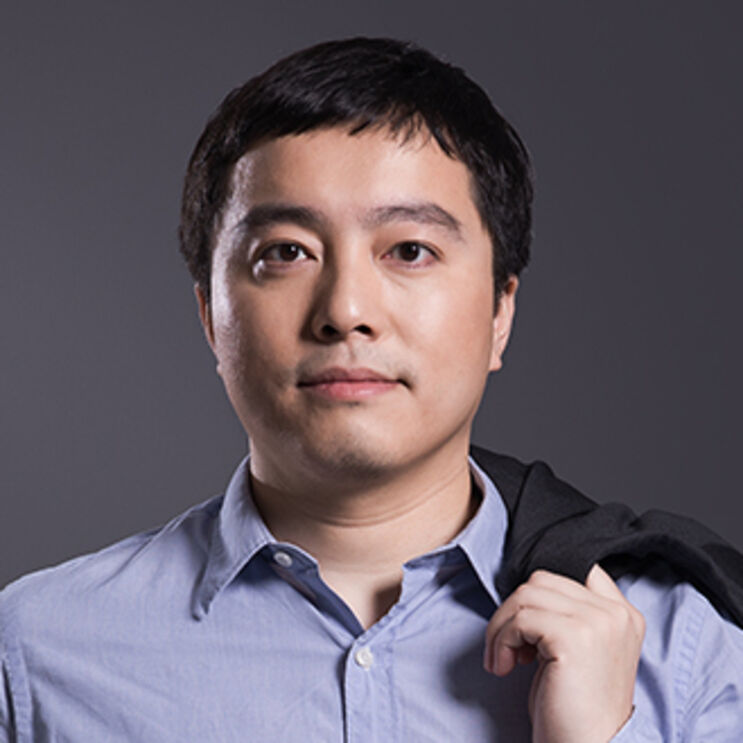"I hope that WIAS can provide a unique platform for scientists from all over the world to pursue bold and creative research to push the boundaries of science and technology."
Biography
Dr. Xiaofei Gao received his Bachelor’s and Master’s degrees from Nanjing Agricultural University in 2003 and 2005; Ph.D. degree in Microbiology, Immunology and Genetics from University of Kansas in 2012. He then joined Dr. Harvey Lodish’s laboratory at the Whitehead Institute for Biomedical Research / MIT for his postdoctoral research. Dr. Xiaofei Gao received a number of recognitions including the Lymphoma and Leukemia Society Fellow Award; Chinese Government Award for Outstanding Self-financed Student Abroad.
History
2020
Leading High-level Talents of Universities in Zhejiang Province
2018
Qiushi Outstanding Young Scholar Award
Research
Our long-term interest is to understand how stem/progenitor cell fates are determined via coordination of multiple cellular factors and environmental signals under normal and stressed conditions. Stem/progenitor cells can respond to extrinsic and intrinsic signaling cues, and decide whether to undergo self-renewal or a differentiation division. This decision plays a key role in tissue regeneration and maintaining tissue homeostasis. We have used genetic, cell biology, molecular biology and biochemical approaches to systematically analyze mechanisms by which cells integrate extrinsic and intrinsic signals to make developmental decisions. In addition, by using single-cell RNA sequencing technology, we have dissected the heterogeneity within a cell population and discovered novel mechanisms underlying stem cell self-renewal. More importantly, building on our basic research, we have discovered several drugs that can retain orpromote the self-renewal capacity of certain stem cells for therapeutic purposes.
Representative Publications
* These authors contributed equally
1. Gao X*, Lee HY*, Li W, Platt RJ, Barrasa MI, Ma Q, Elmes RR, Rosenfeld MG and Lodish HF, Thyroid hormone receptor beta and NCOA4 regulate terminal erythrocyte differentiation, PNAS, 2017, doi: 10.1073/pnas.1711058114
2. Gao X, Lee HY, Lummertz Da Rocha E, Lu YF, YX Feng, Barrasa MI, Cahan P, Li H, Daley GQ, Lodish HF. TGF-β inhibitors stimulate red blood cell production by enhancing self-renewal of BFU-E erythroid progenitors. Blood, 2016 Oct 24. pii: blood-2016-05-718320.
3. Gao X, Pham TH, Feuerbacher LA, Chen K, Hays MP, Singh G, Rueter C, Guerrero RH, Hardwidge PR.Citrobacter rodentium NleB inhibits tumor necrosis factor (TNF) receptor-associated factor 3 (TRAF3) ubiquitination to reduce host type I interferon production. Journal of Biological Chemistry, 2016 Jul 7. pii: jbc.M116.738278.
4. Lee HY*, Gao X*, Barrasa MI, Li H, Elmes RR, Peters LL and Lodish HF, “PPARα and glucocorticoid receptor synergize to promote erythroid progenitor self-renewal”, Nature, DOI 10.1038/nature14326,2015. (Highlighted article by Diamond Blackfan Anemia Foundation)
5. Gao X, Wang X, Pham T, Feuerbacher LA, Lubos ML, Huang M, Olsen R, Mushegian A, Slawson C and Hardwidge PR, “NleB, a Bacterial Effector with Glycosyltransferase Activity, Targets GADPH Function to Inhibit NF-κB Activation”, Cell Host & Microbe, 13: 87-99, 2013.
6. Pham T, Gao X, Singh G and Hardwidge PR, “Escherichia coli virulence protein NleH1 interaction with the v- Crk sarcoma virus CT10 oncogene-like protein (CRKL) governs NleH1 inhibition of the ribosomal protein S3 (RPS3)/nuclear factor κB (NF-κB) pathway”, Journal of Biological Chemistry, 288(48):34567-74, 2013.
7. Gao X and Hardwidge PR, “Ribosomal protein S3: A multifunctional target of attaching/effacing bacterial pathogens”, Frontiers in Microbiology, 2:137, 2011. (Invited review)
8. Wan F, Weaver A, Gao X, Bern M, Hardwidge PR and Lenardo MJ, “IKKâ phosphorylation regulates RPS3 nuclear translocation and NF-êB function during infection by the foodborne pathogen E. coli O157:H7”, Nature Immunology, 12(4): 335-43, 2011.
9. Gao X, Wan F, Mateo K, Callegari E, Wang D, Deng W, Puente J, Li F, Chaussee MS, Finlay BB, Lenardo MJ and Hardwidge PR, “Bacterial effector binding to ribosomal protein s3 subverts NF-kappaB function”, PLoS Pathogens, 5(12): e1000708, 200.
Contact Us
